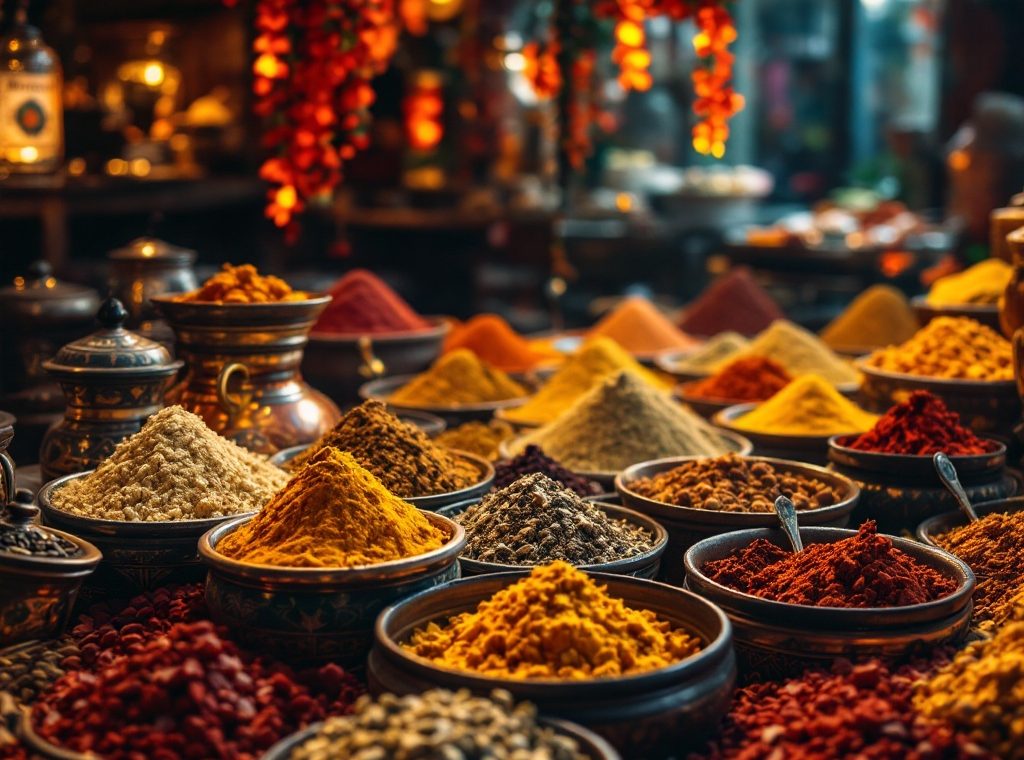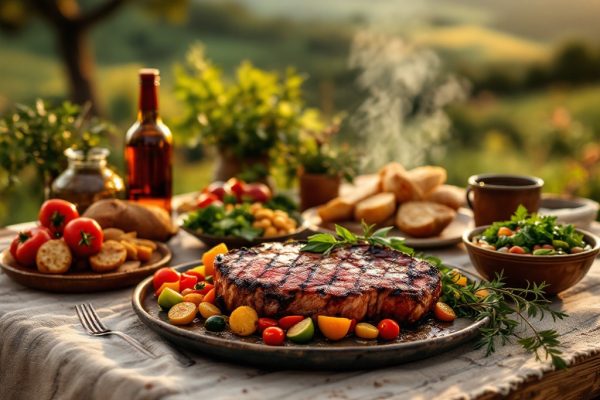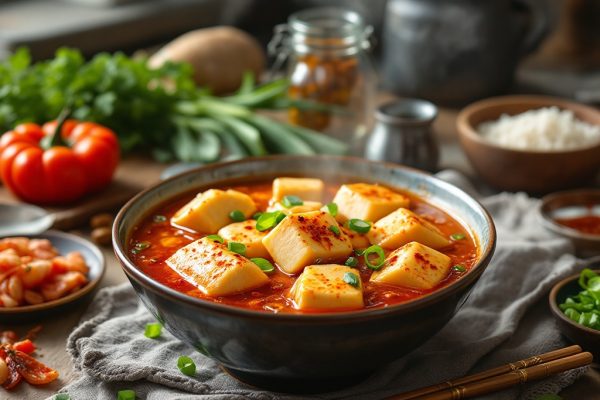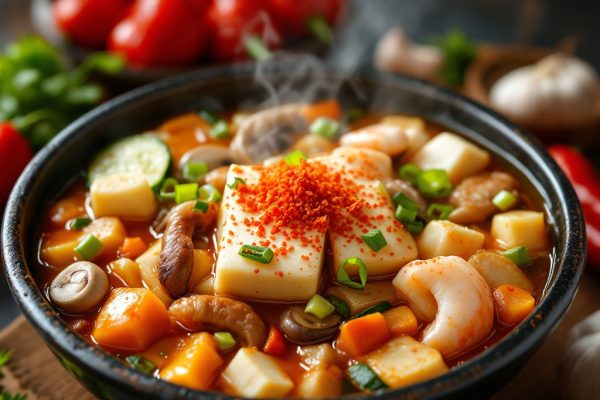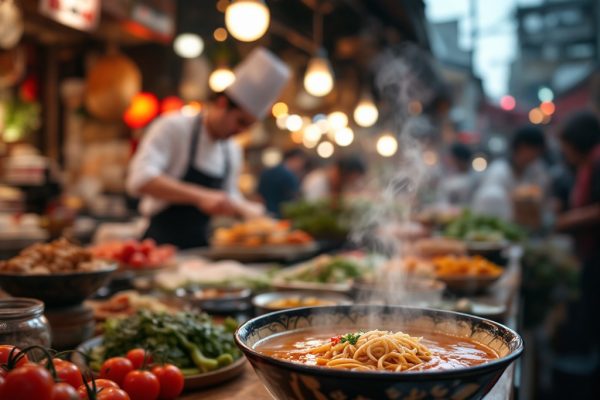Traditional Curry Spices List for a Perfect Indian Flavor
Unlock the secrets of authentic Indian cuisine! Discover the vibrant world of traditional curry spices, from the earthy warmth of turmeric and cumin to the bright citrus notes of coriander. Explore the art of blending these aromatic components, creating a symphony of flavors ranging from simple to complex. Learn about the essential role of garam masala, the heart of Indian cooking, and how to use it to elevate your dishes. Dive into the nuances of regional variations, spice application techniques, and the magic of the masala dabba. Start your culinary journey today and transform your meals with the rich tapestry of Indian spices!
Important information
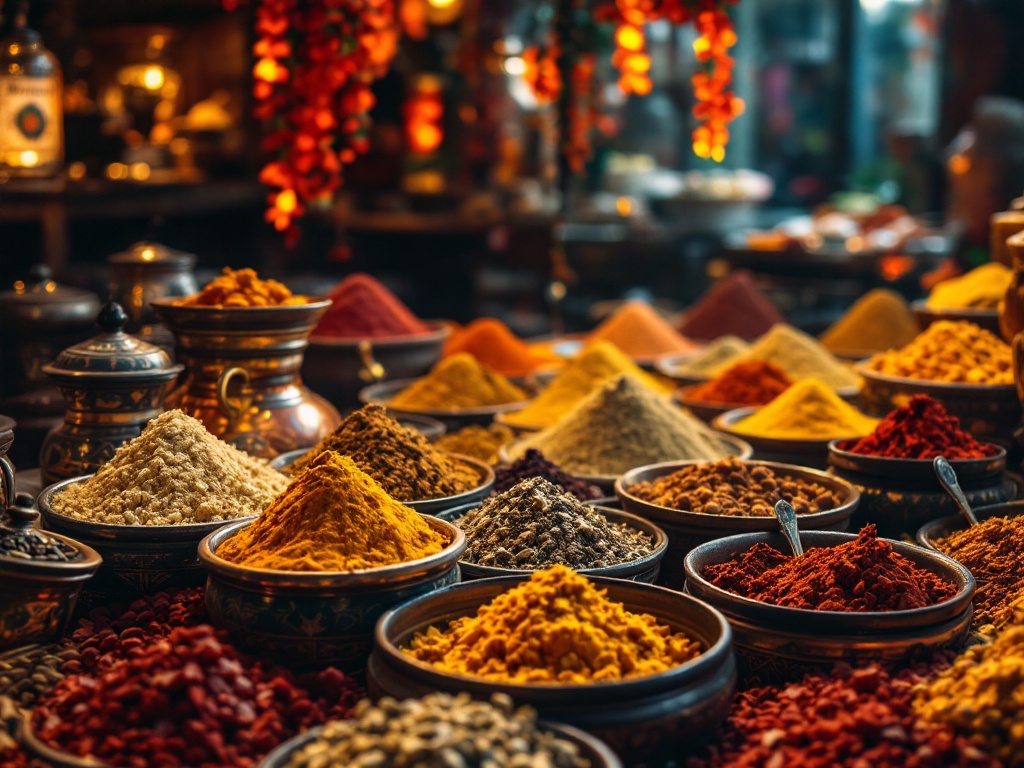
- Turmeric, cumin, and coriander are core spices in many Indian curries, providing color, warmth, and citrusy notes.
- Garam masala, a blend of spices like cardamom, cinnamon, cloves, and pepper, adds depth and warmth. Add it near the end of cooking.
- Tempering spices in hot oil or ghee (tadka/baghaar) releases their aromas and is a key technique in Indian cooking.
- Regional variations exist, with North Indian curries often richer and creamier, while South Indian curries use coconut milk and tamarind for a lighter, tangier taste.
- Marinades using yogurt and spices like turmeric, cumin, coriander, ginger, garlic, and chili powder tenderize and infuse ingredients with flavor.
Understanding the Traditional Curry Spices for a Perfect Indian Flavor
Indian cuisine’s vibrant flavors originate from a base of traditional curry spices. These aromatic components include turmeric, known for its color and anti-inflammatory benefits, cumin, with its earthy warmth, and coriander, offering a bright, citrusy note. Garam masala, a complex blend, adds depth and warmth to the flavor profile. The spice repertoire extends to mustard seeds, fenugreek, chili powder, cardamom, cloves, cinnamon, and black pepper. The artistry lies in the blending. A simple curry may use a few spices, while a complex dish could incorporate a dozen or more, creating a symphony of tastes.
Key Ingredients in Traditional Curry Spices
Indian cuisine is renowned for its diverse and flavorful curries, built upon a foundation of traditional spices. Key ingredients include turmeric, paprika, garam masala, cumin, and coriander, further enhanced by curry leaves, coriander leaves, and fresh ginger. Fenugreek leaves and chilies add the finishing touches to this aromatic blend. These carefully selected spices create the base for a wide array of curries, each boasting a distinctive flavor profile.
Turmeric imparts an earthy depth and vibrant color.
Paprika introduces a subtle smoky note.
Garam masala, a blend of spices, adds warmth and complexity.
Cumin and coriander provide earthy, citrusy notes.
Curry leaves and coriander leaves offer fresh, aromatic flavors.
Ginger contributes a zesty, pungent taste.
Fenugreek leaves bring a slight bitterness and a touch of sweetness.
Chilies provide the heat, adjustable to each curry’s desired spiciness.
Garam Masala: The Heart of Indian Cuisine
Garam masala, India’s signature spice blend, infuses warmth and depth into countless dishes. Common components include cardamom, cinnamon, cloves, and black pepper. The precise recipe varies by region and family tradition, sometimes incorporating cumin, coriander, or nutmeg. Adding garam masala towards the end of cooking preserves its fragrant aroma, enhancing the finished dish. Toasting the spices briefly before grinding further intensifies their flavor, creating a more complex taste.
The Role of Turmeric and Paprika in Curry Dishes
Turmeric gives curry its warm, earthy flavor and vibrant yellow color. This spice contains curcumin, a compound shown to have anti-inflammatory and antioxidant properties. Paprika, another key ingredient, brightens the dish further with its mild, sweet taste. Together, these spices create curry powder’s characteristic natural coloring.
Cumin and Coriander: Essential Flavors
Cumin and coriander are essential to Indian cuisine. Cumin provides warmth with its nutty, earthy flavor, while coriander contributes bright, citrusy notes that enhance the overall taste. This powerful duo forms a delicious base for many Indian curries, making them must-have spices for any aspiring Indian cook.
The Impact of Chillies on Flavor and Heat
Chillies are essential to Indian curries, providing both heat and complexity. The amount used determines the spiciness. With various types boasting different levels of pungency, there’s a chilli for everyone. Some prefer a gentle warmth, while others relish a fiery burn. But chillies do more than just add heat; they enhance the overall flavor and stimulate the appetite. Furthermore, they may offer health benefits such as improved digestion and a faster metabolism.
Exploring Unique Spice Blends and Their Uses
The masala dabba, or spice box, is essential to Indian cuisine and sits at the heart of every Indian kitchen. North Indian curries typically use a base of turmeric, cumin, coriander, chili powder, and garam masala. The true magic, however, comes from spices like dried fenugreek leaves, offering a subtle bitterness similar to maple syrup, and black mustard seeds, whose pungent aroma is released when tempered in hot oil. Regional variations further enhance the variety of Indian flavors with unique spice blends.
Masala Dabba: The Spice Box
A masala dabba is a round, stainless steel container holding several smaller containers (typically seven) filled with everyday spices. These spices often include cumin, coriander, turmeric, chili powder, and garam masala. This incredibly useful setup allows cooks quick access to spices during cooking, streamlining meal preparation.
Understanding Basic North Indian Curry Spices
North Indian curries rely on a blend of spices including coriander seed, cumin, turmeric, cardamom, cloves, cinnamon, bay leaf, and black pepper. This combination creates a warm, earthy base for traditional dishes, adding rich, aromatic flavors.
The Use of Dried Fenugreek Leaves
Dried fenugreek leaves offer a unique sweet, hay-like aroma and nuanced flavor to Indian curries. Chefs often sprinkle them on dishes just before serving for an enhanced taste. Home cultivation is easy, providing a readily available source of these versatile leaves for various culinary uses.
Black Mustard Seeds and Their Pungent Taste
Pungent black mustard seeds are a staple in Indian cuisine, adding a distinctive kick to dishes like curries, chutneys, and salads. This sharp flavor intensifies the overall taste, creating a more vibrant culinary experience.
Enhancing Indian Flavor Profiles with Additional Spices
- Cloves infuse Indian cuisine with a warm, sweet, and pungent aroma, adding depth to countless dishes.
- Saffron, renowned for its distinct flavor and vibrant hue, lends a touch of luxury.
- Earthy and slightly bitter, black cumin seeds provide a unique dimension to garam masala and other spice blends.
- Star anise, with its licorice-like flavor, enhances rich gravies and meat dishes.
The Sweet and Pungent Aroma of Cloves
Cloves offer a warm, sweet, and spicy aroma, making them a staple in garam masala and other Indian spice blends. This versatile spice enhances the flavor of curries, biryanis, and various meat dishes, adding a rich depth. They are also used in beverages like chai and mulled wine, providing a comforting warmth. In baking, cloves contribute a unique flavor to gingerbread, cookies, and fruit cakes. Beyond culinary uses, cloves have been recognized for their potential health benefits, including antioxidant and anti-inflammatory properties.
The Luxurious Touch of Saffron
Saffron, derived from the Crocus sativus flower, is celebrated for its unique aroma and flavor. It adds a rich, floral taste and vibrant yellow color to dishes such as biryani and kheer. Due to its labor-intensive harvest, where only a few threads are hand-picked from each flower, saffron is an expensive spice.
Black Cumin Seeds in Garam Masala
Black cumin seeds, with their smoky and earthy flavor, are essential to certain garam masala blends. Milder than regular cumin, these seeds add depth and complexity to the spice mix, making garam masala a perfect enhancement for Indian cuisine.
The Use of Star Anise in Indian Dishes
Star anise, with its distinct licorice flavor, is a key ingredient in certain garam masala blends. This unique spice beautifully complements other spices in Indian cuisine, creating a more complex and flavorful dish.
Regional Variations in Indian Curry Spices
India’s diverse culinary traditions are reflected in its curries, with each region boasting unique flavors. Northern Indian curries are known for their warming spices like cumin, coriander, and garam masala, creating rich and flavorful dishes. In contrast, Southern Indian curries tend to be lighter and tangier, often incorporating coconut milk and curry leaves. Coastal curries highlight the region’s abundant fish and seafood, influencing the spice blends used. Regional ingredients also play a key role. Mustard and poppy seeds are popular in the East, while dried red chilies bring the heat in the South. Fresh herbs and spices further enhance these distinct regional tastes, showcasing the incredible diversity of Indian cuisine.
North Indian Curries
Characterized by warming spices such as cumin, coriander, and garam masala, these curries offer rich and flavorful dishes.
South Indian Curries
Often lighter and tangier, these curries frequently incorporate coconut milk and curry leaves.
Coastal Indian Curries
Seafood plays a central role in these curries, with spice blends influenced by the region’s abundant fish and other marine life.
East Indian Curries
Mustard and poppy seeds are prominent ingredients in these curries, lending distinct flavors.
Differences Between Northern and Southern Indian Curries
North Indian Curries
Northern Indian curries are characterized by their rich, creamy textures, often achieved through the use of dairy products like cream and butter. These curries showcase warming spices such as garam masala, cumin, and coriander.
South Indian Curries
Southern Indian curries offer a tangier, lighter flavor profile thanks to the use of coconut milk and tamarind. They feature bolder flavors derived from ingredients like curry leaves, mustard seeds, and fenugreek, leading to more complex and nuanced tastes.
The Influence of Regional Ingredients on Spice Blends
India’s diverse spice blends reflect its regional ingredients. Coastal cuisine often features coconut and curry leaves. Kashmir, known for its red chilies, uses them liberally. Kerala, abundant in black peppercorns, seasons many dishes with this pungent spice. Regions known for specific spices, like mustard or poppy seeds, naturally use them more often. Rajasthan’s arid climate favors dried spices, while Bengal’s humidity lends itself to fresh herbs and spices. These regional variations create the rich tapestry of Indian cuisine, with each area contributing its unique flavor profile.
Cooking Techniques and Spice Application
Tempering
Tempering unlocks the aromatic potential of spices by infusing hot oil or ghee with whole spices, such as mustard seeds, cumin seeds, or curry leaves. This flavorful infusion then enhances the entire dish.
Marinating
Marinating uses yogurt, ginger-garlic paste, and ground spices to tenderize and infuse ingredients with flavor, allowing the spices to penetrate deeply and transform the food.
Frying Spices
Frying spices in hot oil intensifies their taste, creating a rich, deep flavor, particularly with ground spices or pastes.
Spicing a Sauce
Spicing a sauce is a nuanced art of layering flavors. Some spices are added early for a blended, mellow taste, while others are added later to retain their bright, fresh notes, resulting in a complex and delicious sauce.
Tempering Spices for Optimal Flavor
Tempering, also known as tadka or baghaar, is a cornerstone of Indian cooking. This technique involves briefly frying spices in hot oil or ghee to unlock their aromatic oils, infusing dishes with vibrant flavor. Common spices used include mustard seeds, cumin seeds, curry leaves, and dried red chilies, but options like fenugreek seeds or asafoetida offer unique dimensions. The choice of oil also plays a crucial role, with ghee imparting a rich, buttery taste. This simple yet potent final flourish adds a layer of complexity to many Indian dishes.
Marinating with Indian Spices
Indian spices transform marinades, tenderizing ingredients and infusing them with rich flavor. Meats like chicken, lamb, and fish especially benefit from this technique. Vegetables, too, such as cauliflower, potatoes, and paneer, readily absorb these wonderful flavors. Common spices include turmeric, cumin, and coriander, often complemented by ginger, garlic, chili powder, and garam masala. Marinating times can be as short as 30 minutes for a hint of flavor, or overnight for a more intense experience. The ideal duration depends on the specific ingredients and your desired taste. Here’s a step-by-step guide to using Indian spices in marinades:
Choose your protein or vegetable. Popular choices include chicken, lamb, fish, cauliflower, potatoes, and paneer.
Select your spices. A base of turmeric, cumin, and coriander is a great start. Consider adding ginger, garlic, chili powder, and garam masala for depth.
Combine spices with a liquid base. Yogurt, oil, or lemon juice work well to create a paste.
Marinate your ingredients. A minimum of 30 minutes is recommended, but marinating overnight intensifies the flavor.
Cook as desired. Grilling, baking, or pan-frying are excellent cooking methods.
Frying Spices to Enhance Aromas
Frying spices in hot oil or ghee releases their aromatic compounds, creating a flavorful base for Indian dishes. This technique, often called tempering or blooming, enhances the spices’ taste and fragrance, unlocking their full potential and transforming the dish. This process, known as “tadka” or “chaunk,” involves heating oil or ghee in a pan and adding whole or ground spices. The hot fat extracts and intensifies the spices’ flavors, infusing the entire dish with a rich, complex aroma. Tempering is crucial in Indian cuisine as it elevates the taste and aroma of many dishes, from lentil soups and vegetable curries to rice dishes and dals.
Spicing a Sauce: Techniques and Tips
For a rich, deep flavor, introduce whole spices early in the cooking process. Ground spices provide a final burst of flavor later on. Taste and adjust seasonings gradually throughout cooking. Remember that certain spices enhance specific ingredients. Consider your sauce’s components when selecting spices to create a balanced, flavorful dish.

